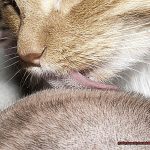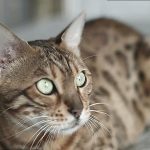Why Do Cats Vibrate When They Stretch?
Is Vibration in Cats Normal?
Yes, vibrating cats are very normal! Scientists aren’t sure what causes purring, but it’s thought that certain settings lead a cat’s voice box to vibrate. When you see your cat vibrating, try listening to them! If you place your hand on their side or back during the deed, you will most likely notice that their purrs are synced with their breathing.
Why Do Cats Vibrate When They Stretch?
Stretching begins as soon as the cat awakens. Cats stretch after sitting quietly or sleeping to get their muscles working again after a period of inactivity. Stretching aids in the regulation of muscle tactility and length. The myotatic reflex causes cats to vibrate when they stretch. When a large muscle is stretched, a group of nerves is activated. These nerves prevent the muscle from overstretching, which would be damaging to it. They achieve this by contracting the muscles. The muscles wash away the poisons and waste by-products that have collected during times of inactivity with each stretch. Stretching may assist in the removal of toxins by improving blood and lymph circulation. Stretching also gets the muscles ready for workout.
What Does Vibrating Mean in a Cat?
Purring refers to the vibrating feeling that cats exhibit. Purring in cats is either intentional or involuntary, according to scientists, but it typically indicates that the cat is content with its present surroundings. The purring activity might be induced by the release of endorphins, which are substances released by our brain when we are in a joyful scenario. These endorphins make people feel happy, and they also make cats feel good. The average purr has a frequency of 25 Hz, however it varies every cat. A purr may vary in duration and loudness, even within the same cat, depending on the environment or the age of your cat. As they age and experience respiratory or purring challenges, some senior cats may acquire a softer purr.
Benefits of Stretching for Cats
Stretching is a fantastic strategy to avoid injury as well as reduce pain that is already there but you may be unaware of! Cats have long known the many advantages of stretching, whether it’s flexing in the morning or yawning at night. Cats, like humans, stretch to be supple, comfortable, and happy. A good stretching routine can help you avoid injury by improving the musculoskeletal system’s overall functional performance and mechanical efficiency, increasing joint range of motion, increasing blood and nutrient circulation to an area while removing waste products, and relieving muscle tightness. Although cats stretch on a daily basis, these stretches are known as active stretches. Active stretches are non-specific, cat-controlled stretches.
Conclusion
A cat’s communication style differs from that of humans and even other animals. All we can do is provide them with room, a calm and exciting environment, and nutritious food. A calm and contented cat WILL snooze often, and stretching (and vibrating while stretching) is part of the package. Just make sure you’re ready to play with your cat after you’ve had a relaxing snooze and stretched!







